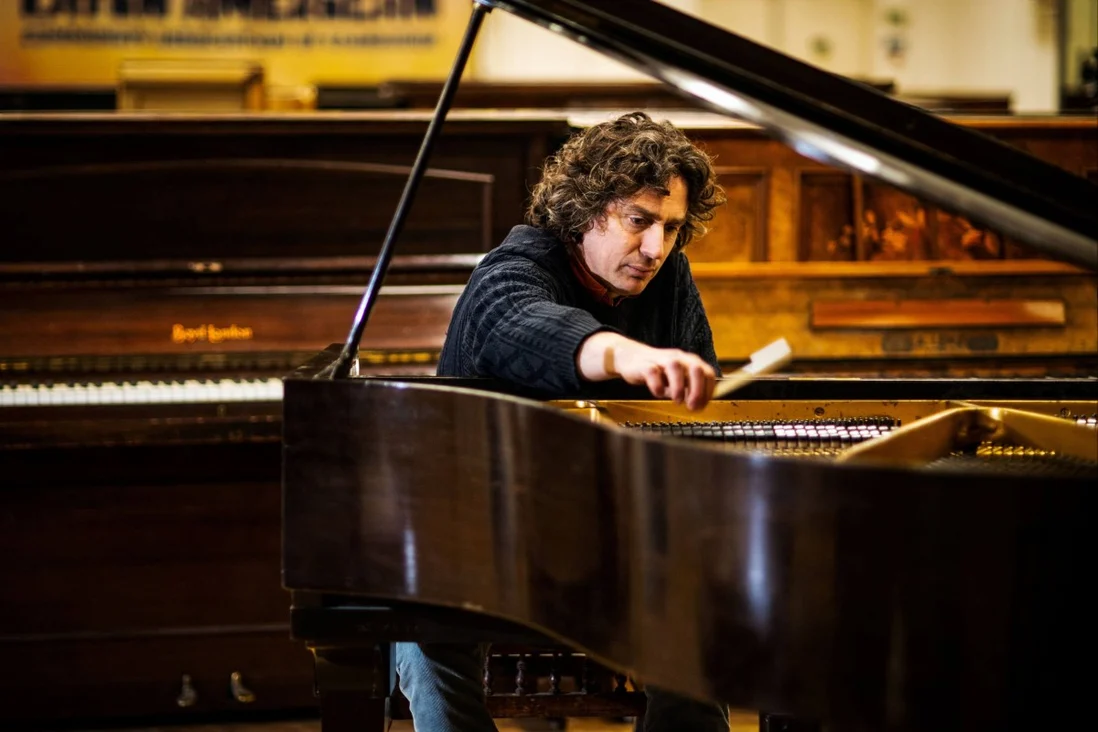British musician finds his role to save unwanted piano
- Tim Vincent Smith and his team of volunteers renovated the discarded pianos and presented them for ‘adoption’.
- Pianos that cannot be restored are separated and converted into sculptures, furniture, or art.
In a deserted department store near the port of Leith in Edinburgh, Tim Vincent Smith arrives inside the open top of a grand piano and his fingers break the light strings.
Piano is one of hundreds rescued by musicians and their team of volunteers, as homes across the UK have thrown away the instruments in favour of more space.
Vincent Smith aims to renovate as many pianos as possible before they are offered for “adoption.” Things outside of repair are turned into art or furniture.
”I found out that the pile of garbage was full of pianos and so I started making furniture that included a kind of high bed with a window seat and stairs, and then the piano kept coming,” he said.
As the instruments flooded, Vincent Smith realized that many were still “very good,” and so he and his bandmate Matthew Wright decided to find a piandrome to save as many people as possible.
”If you’re lucky, you can find a beautiful antique piano with good action and tone, tuning in and a pleasure to play.
”The best thing for an old piano is to find a new home.”
The tradition of making piano in Britain is more than 200 years old, with about 360 manufacturers at their peak at the beginning of the last century.
The country was a supplier to the world, consisting of great Western classical musicians such as Frederick Chopin, Franz Liszt and Johann Christian Bach – the youngest son of Johann Sebastian Bach.
These devices were once the center of British social life and identity and also made their place in homes and local pubs, where they were used to provoke beer-driven songs.
But as the size of the houses shrunk and the stairs became narrower, it became difficult to move the piano in the narrow spaces.
Television and then later the electronic piano began to provide an alternative means of night entertainment, leaving the traditional piano to collect dust in the corner of the living rooms.
Even homeowners began to find innovative – if destructive – ways to get rid of instruments: in the 1950s and 1960s, competitions were held to slice the piano with hammers.
When Vincent Smith started building furniture 20 years ago, he first got to see the piano. At the time, he was living and working at shakespeare and company’s book shop on the banks of the Seine River in Paris.
The owner would send it to the local scape to collect wooden planks that could be used to make cabinets, benches, and beds for employees working in writers’ favorite shop like Ernest Hemingway.
Vincent Smith said he was often surprised by the quality of the piano thrown around the French capital.
After starting the pianodrum, a piano was brought from the city of Plymouth in south-west England to Edinburgh and appeared unusable.
”All the keys were stuck together because it got a little damp,” he said.
”I took off the edges of the lead weight with a mask so I didn’t poison myself. And then when the keys could move, we found it looked really good.
”I started to be a little more careful about it and work all the notes – it became like our concert piano.
Pianos that cannot be restored are separated and converted into sculptures, furniture, or art.
One of Vincent Smith’s works, the six-metre (about 20 ft) ivory structure outside the base of the pendrum, is to highlight what society considers wasted.
The pianoderm now holds regular events where the dilapidated shop is transformed into an amphitheater into a concert hall made entirely from an upcycled piano.
There are also open sessions where enthusiasts can try the piano. When they find something they like, they can “adopt” it and take it home in exchange for an optional small donation.
As the concert piano strings echo in the old shop, Vincent Smith raises his head and nods once – the piano is repairable.
”The piano is just an example of something that our society considers wasted but can be used for a larger purpose,” he said.
”So I think what I’d like to say to people is that if you’re thinking about getting rid of your piano, think about having it, it’s a beautiful thing, a piano.



